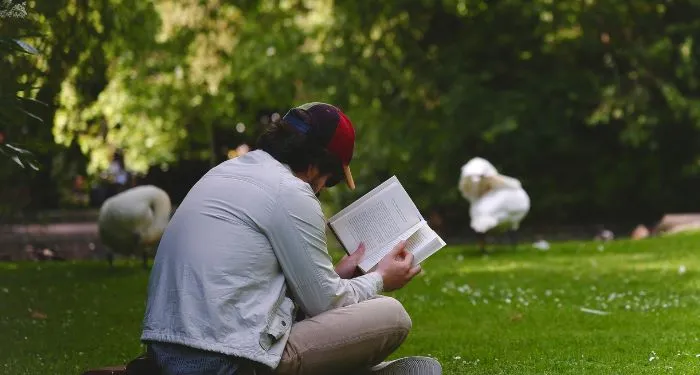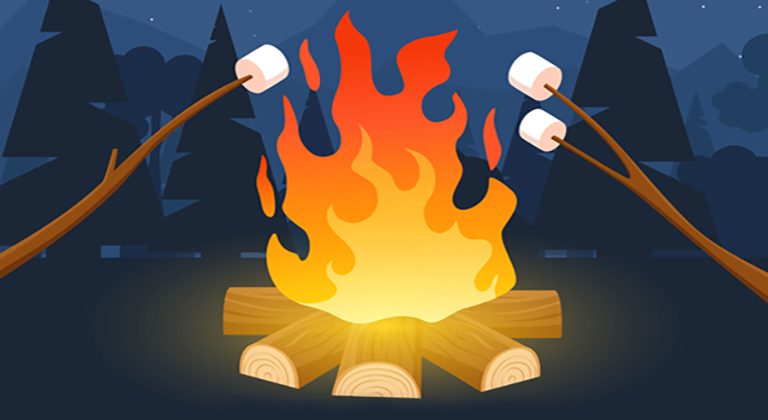Jacob and Wilhelm Grimm, German medievalists and linguists, had been assiduously collecting fairy tales for about three years—hunting down variants, tracking patterns of imagery and motif, shaping and to some extent taming stories for print—when the tales took their revenge on Wilhelm. On the night of July 17, 1813, he dreamed that a sorceress transformed him into a series of animals, including a horse and a white bird. “While in his own eyes he retained his human form,” Ann Schmiesing recounts in her biography, The Brothers Grimm,
he could tell from the conversations of people around him whenever she had turned him into another animal. He felt fearful throughout this experience and begged the sorceress to lift the curse, protesting that he had done nothing to deserve it.
Most of us have experienced the mocking return by night of whatever preoccupies our waking hours. But although Wilhelm surely recognized overt fairy-tale elements within his dream, neither brother could have realized how closely the dream would conform to later scholarly classifications of folk narratives—classifications inspired in part by their work. Wilhelm’s sleeping mind had churned up a “Tale of Magic,” one of seven broad categories within the Aarne–Thompson–Uther Index of international folklore, a system developed over the course of the twentieth century.1 (Other categories include “Religious Tales” and “Tales of the Stupid Ogre.”)
Within the broader category of magic, Wilhelm’s dream falls under a popular type designated “Supernatural or Enchanted Wife (Husband) or Other Relative,” and can be further slotted into one of two subtypes, either “Animal as Bridegroom” or “Little Brother and Little Sister.” Relevant motifs include “transformation: man to animal” and, more narrowly, “transformation by witch (sorceress).” Helpless under his tormentor’s spells, Wilhelm would probably long for “disenchantment by destroying enchanter” or, should a maiden appear, “disenchantment by kiss.” Either resolution seems better than that other common solution to unwanted metamorphosis: “disenchantment by removing skin (or covering).”
The ATU Index is an offshoot of the nineteenth-century fascination with folklore and fairy tales, and an indirect salute to the long, detailed appendixes that Jacob and Wilhelm Grimm provided in the first two editions of their Children’s and Household Tales, the books containing “Little Red Riding Hood,” “Rumpelstiltskin,” “Rapunzel,” and other stories that forever associate the Brothers Grimm with the fairy tale. These appendixes—rarely reprinted since the Grimms’ deaths—traced literary sources for previously published stories, made note of regional and international variants, discussed emerging patterns, and were “original for [the] time in approaching fairy tales from an interdisciplinary and comparative perspective,” Schmiesing writes. Readers of the first edition questioned not only the gruesomeness of some tales but the balance between the scholarly apparatus and the stories themselves: Was this book really written for children?
It is easy to imagine the Grimms lavishing attention on their preface and notes, sometimes including several tale variants—especially for “Little Snow White,” for which they found eleven versions—while their stoves went cold for lack of fuel and their candles guttered. With each revised edition (now with frontispiece!) the brothers assured themselves that this time, the print run would sell quickly and relieve their precarious finances.
Like so many of the adventures recounted in their anthologies, the brothers’ journey to lasting fame might never have begun if they had not suffered a striking reversal of fortune in childhood. Schmiesing, a professor of German and Scandinavian studies at the University of Colorado Boulder, adeptly sets this riches-to-rags-to-renown story against an evocative background of regional history and the tumultuous contemporary political scene.
Jacob, born in 1785 in Hanau in Hesse-Kassel, was the eldest child of Philipp Wilhelm Grimm, a lawyer and administrator, and his wife, Dorothea Zimmer, the daughter of a councilman in Kassel, the capital city. Wilhelm was born only a year later, followed by Carl, Ferdinand, Ludwig, and Charlotte (“Lotte”). (Of the Grimms’ nine children, three died in infancy.) In 1791 Philipp Grimm was appointed district magistrate in nearby Steinau an der Strasse and moved his growing family into the lovely half-timbered house and lands reserved for the magistrate.2 For Philipp, this was a move home; he had been born in Steinau, and his father had been a Reformed (Calvinist) pastor in the church next to the palace for almost fifty years.
Although their paternal grandfather died before their births, the children were surrounded by devoted adults. Philipp’s intelligent, somewhat severe widowed sister, Charlotte Schlemmer, moved with them to help manage the farm staff and day laborers. Jacob, Charlotte’s favorite, remembered how she taught him to read by pointing out words with a needle, leaving tiny holes in the paper. Later, a private schoolmaster was hired, although his lessons bored the children. On summer walks, the young Grimms picked up insects and other natural specimens for study and display: handheld wonders in an age of collecting. Schmiesing suggests that “the lifelong appreciation of rural environs and local traditions that Jacob and Wilhelm gained in Steinau accounts in part for their idealized depictions of folk culture in their writings.” (When regiments marched through Steinau during these early years of the French Revolutionary Wars, stealing whatever they could grab, Dorothea led her children inside to watch from safety.)
Philipp Grimm’s sudden death of pneumonia when Jacob was eleven meant an expulsion from Eden: the family had to leave the magistrate’s house, with its pet ducks and chickens, its stables, fields, and household staff. Status and abundance vanished almost overnight. Jacob willingly assumed his responsibilities as eldest son—or, we can see now, his fated motif, “orphan hero”—and stayed in harness for six decades. Apart from a small annual pension arranged for Dorothea, which helped her buy the upper floor of a house, the Grimms were now dependent on gifts and whatever they could grow for themselves in a small garden north of town.
In September 1798 the children’s maternal aunt Henriette, first lady-in-waiting to the landgravine Wilhelmine Karoline, paid for Jacob and Wilhelm to move to Kassel and attend the Lyceum Fridericianum. Writing to Wilhelm, Dorothea spelled out their situation in stark terms: the family counted on the two of them for future support. The adults would not live forever. There might be no money for their younger siblings to attend high school without future contributions from their beloved eldest brothers.
Jacob and Wilhelm had always formed a pair within the family. At Steinau, they had shared a bed in their parents’ bedroom (their parents slept behind a curtain), and they shared a room at the lyceum; apart from brief separations due to Jacob’s work, they lived together their whole lives and considered their books and possessions as jointly held. Though they found the teaching at the lyceum uninspiring, the boys supplemented their six hours of daily instruction there with four or five hours of more enjoyable private tutoring, increasing their fluency in Latin and French.
In this way, they finished school in half the usual time and entered the University of Marburg to study law—Jacob first, in April 1802. Wilhelm arrived six months later and established himself as the more fun-loving, gregarious brother; Jacob was the more learned. Social rank was so restrictive in Hesse-Kassel that the Grimms did not qualify to attend university; Dorothea had to receive a special dispensation for them. Similarly, financial support was mostly awarded as a political favor, often to sons of the nobility. The Grimms received none. But true to their Calvinist roots, they regarded these hardships as character-building: “Indigence spurs diligence and work,” as Jacob put it.3
Like any love story, the romance of scholarship typically relies on a quickening, whether a sudden insight, an archival discovery, or an encounter that can feel like a recognition. Goethe explored this phenomenon through the motif of the Augenblick (“eye-glance”): a transformative instant, often erotic, a kind of interruption or dilation of our subjective experience of time. Jacob Grimm’s Augenblick took place at the top of a library ladder. Having been invited to the home of his mentor, the jurist and historian Friedrich Carl von Savigny, Jacob was encouraged to climb up, the better to inspect Savigny’s impressive book collection. “My eyes then were afforded a view that they had never before beheld,” Jacob wrote. Schmiesing explains:
Far back on a shelf, Jacob spied Johann Jakob Bodmer’s collection of Minnelieder, medieval German songs whose exploration of courtly love, or minne, reflect the rise of the knightly class in secularized twelfth-century culture.
Translated and published in the late 1750s by Bodmer, a Swiss poet and critic, and his collaborator, Johann Jakob Breitinger, the Minnelieder included nearly six thousand verses by 140 poets from the Codex Manesse, which was itself a rare survival: a beautifully illustrated fourteenth-century collection of songs compiled by the Manesse family of Zurich. Bodmer’s volume, Schmiesing writes, “supplied a blueprint of sorts for Jacob and Wilhelm’s later scholarly work on literature and language.” They, too, would “preserve literature that otherwise might have been lost” and “draw attention to the beauty and richness of older forms of language.” Jacob could then understand only about half of the Middle High German text, but he was captivated.
In Bodmer’s time, as Schmiesing recounts, few German literary scholars were interested in anything but the ancients, in line with the aesthetic precepts of French neoclassicism. But the tide soon began to turn. German readers were discovering Shakespeare’s work: thrillingly lawless and sensational compared with the plays of Racine and Corneille. Thomas Percy’s Reliques of Ancient English Poetry (1765) charmed both English and German Romantics and became an urtext of the movement. A strain of medievalism was surfacing that suggested the German past might not be all rye bread and muddy farmyards—or rather that humble places and people might also generate stories, heroes, culture. That Counter-Enlightenment notions arose after a century of French domination and eventual occupation now seems inevitable. The philosopher Isaiah Berlin captured this emotional shift in his essay “The Apotheosis of the Romantic Will”:
This sense of relative backwardness, of being an object of patronage or scorn to the French with their overweening sense of national and cultural superiority, created a sense of collective humiliation, later to turn into indignation and hostility, that sprang from wounded pride. The German reaction at first is to imitate French models, then to turn against them.4
In December 1804 Savigny wrote from Paris, where he was researching medieval legal traditions for his monumental History of the Roman Law During the Middle Ages (1815–1831), and asked his young protégé to come work for him. Jacob left Marburg at age twenty, without formally completing his studies, and joined his mentor in what was then the capital of European culture. Napoleon had just been crowned emperor. Stealing a moment from his archival and textual work for Savigny, Jacob pored over the Codex Manesse in the Bibliothèque Nationale in Paris.
Bereft without Jacob, Wilhelm sent longing letters from Marburg. The brothers vowed never again to be parted: “If someone should want one of us to go somewhere else, the other would need to resign at once,” Jacob wrote. “We are now so accustomed to each other’s companionship that separation could distress me to death.”
Despite their intellectual curiosity and initiative—they both launched into freelance scholarly projects as soon as they left university—the Grimms’ best-known endeavor arose through serendipity.5 In Marburg, Savigny had introduced the brothers to the Romantic writer Clemens Brentano, who was collaborating with the poet Achim von Arnim on a folk song collection, The Boy’s Magic Horn, published in three volumes from 1805 to 1808. (The Grimms helped with volumes two and three.) Their aims were fiercely patriotic, especially in the first volume; by the time the subsequent volumes were compiled, many German territories were under French occupation. In 1809 Brentano and Arnim asked Jacob and Wilhelm to collect folk stories for them for a new anthology. When Brentano and Arnim’s interest faltered, the brothers decided to keep collecting and publish the tales themselves—crafting, over the next two years, the first volume of the anthology that would become Children’s and Household Tales.
The brothers already had an unusually rich collection of antiquarian books that might yield tales traceable to the oral tradition.6 (The term “folklore” was not coined until 1846.) They also solicited source material from friends, including Dortchen Wild, who later married Wilhelm. The brothers preferred “natural poetry” (spontaneous eruptions from the Volk) over more refined “artistic poetry,” even the many fairy tales and poems by Romantic writers. But in fact most of the Grimms’ tales came from educated young women, undermining the brothers’ “dream of the uncontaminated peasant legacy,” as Marina Warner wrote in these pages.7 These tales—whether heard or read by their young contributors—often derived from French writers like Charles Perrault and Madame d’Aulnoy, who had artfully rewritten tales from the oral tradition a century earlier. Nevertheless, the brothers kept mining for the earliest, most “original” versions of tales possible, intent on uncovering and disseminating German cultural heritage at its roots.
Early copies of Children’s and Household Tales: Collected by the Brothers Grimm appeared in time for Christmas 1812 and contained eighty-five tales, including most of those familiar to later readers, such as “Hansel and Gretel” and “Aschenputtel” (“Cinderella”). As many have noted, these are not the versions popularized by Disney, which tend to favor Perrault’s elegant, playful treatments. In the Grimms’ “Cinderella,” for example, the stepsisters mutilate their feet to fit into the glass slipper, and at the end their eyes are pecked out by doves—two details not to be found in the 1950 Disney film. The darker and more punitive Grimm versions spread steadily throughout Europe and America but were often bowdlerized for children; their influence eventually diffused through Victorian writers, including Ruskin and Dickens, both of whom could have echoed the reverence of Friedrich Schiller: “Deeper meaning resides in the fairy tales told to me in my childhood than in the truth that is taught by life.”
The Grimms aimed for untouched transmission from the oral storyteller to readers young and old. “No circumstance has been poeticized, beautified, or altered,” they claimed in their preface. “In this respect, no such collection has previously existed in Germany, for one has almost always used fairy tales as material from which to form larger stories.” In this way, authors of literary fairy tales had “grabbed what belonged to children out of their hands, giving them nothing in return.”
The impulse to capture traces of “authentic” culture before it was diluted or corrupted by industrialization and foreign influence can be seen across Northern Europe and Britain in this period, from Johann Gottfried von Herder’s collections of folk songs in the 1770s to the young Walter Scott’s tramps through the border country in search of ballads for Minstrelsy of the Scottish Border (1802). When, in their research for the second volume (published in 1815), the Grimms located an actual “peasant” storyteller, Dorothea Viehmann, an impoverished older woman whose father had been a tavern owner, their joy was palpable. Here, finally, was a source they were delighted to disclose.
The Grimms published almost half of the forty oral tales Viehmann provided, including “The Goose Girl” and “Hans My Hedgehog,” and commissioned their brother Ludwig to make an engraving of her for the book. Characteristically, they exaggerated Viehmann’s simplicity, not disclosing that she wrote and spoke French, for example. But she was a vital part of the Grimms’ mythos. “With her sharp gaze and seemingly magical ability to recount tales with unfailing precision and fidelity,” Schmiesing remarks, “Viehmann thus emerges almost as a fairy godmother who enabled the Grimms to succeed in their quest to enhance their collection.”
What set the Grimms apart was not only their seeming authenticity but their vibrant storytelling, which often involved the kind of editorial interference they deplored in others. Children’s and Household Tales was issued in seven complete and ten abridged editions over the course of their lifetimes and grew to include over two hundred tales. The brothers—Wilhelm especially—were avid revisers, always looking for ways to increase sales appeal (the books sold slowly) and improve the stories. Schmiesing adroitly summarizes the ways the tales evolved through subsequent editions, growing more visually descriptive but also more moralistic and Christian, and increasingly reflecting conventional bourgeois values. Evildoers suffer more severely for their crimes. Gender norms grow more rigid. Even in the first edition, “female characters are typically rewarded for piety, obedience, and self-sacrifice, whereas male characters are rewarded for their cheekiness, subterfuge, and risk-taking”—but by the second edition of 1819, female characters are markedly less vocal and independent.
For over four decades, their work on the fairy-tale collection continued alongside the Grimms’ day jobs (mostly in libraries) and their many other projects. The brothers’ first books—Jacob’s On the Old German Meistergesang and Wilhelm’s Old Danish Heroic Songs, Ballads, and Tales—were both published in 1811, while they were collecting and editing fairy tales. Their joint prose translation of the Lay of Hildebrand and the Wessobrunn Prayer, early poems in Old High German, appeared in 1812, the same year as Children’s and Household Tales.
They maintained this grueling pace throughout their writing lives, culminating in Jacob’s greatest philological accomplishment, his German Grammar (1819–1837)—in which he formulated Grimm’s law on Germanic consonant shifts—and the brothers’ other major collaboration, their German Dictionary, begun in 1838 and completed by others over a century later. Even the most prolific scholars today may feel like slugs by comparison. The brothers crowned their scholarly achievements with a sacrificial act of conscience: protesting the new king of Hanover’s annulment of the constitution in 1837. They lost their jobs at the University of Göttingen, and Jacob was exiled.
Although aspects of the brothers’ legend have become familiar—especially through the lively, persuasive writings of Jack Zipes—Schmiesing’s book is the first full-length English-language biography of the Grimms in fifty years.8 She grapples skillfully with the big bad wolves of recent Grimm scholarship: the gender stereotypes in the tales, the Grimms’ antisemitism, and their romantic nationalism, which so easily shades into German chauvinism. The Nazis used German folktales and fairy tales as propaganda, stressing racial interpretations; they stipulated their use in the public school curriculum and in the Reich Bride Schools.9
But as Zipes and others have argued, fairy tales are a dynamic genre that can also be used to undermine oppressive forces. The unabridged Grimm versions came into vogue later in the twentieth century, inspiring Angela Carter’s macabre fairy tales that lay bare the patriarchy, among thousands of other adaptations and echoes.
Rudolf Steiner, who was deeply moved by Goethe’s fairy tale “The Green Snake and the Beautiful Lily” (1795), made the oral recital of fairy tales and fables foundational to Waldorf teaching. An Internet search turns up many Waldorf-related blogs offering advice on how to tell fairy tales to young children without terrifying them. The Grimms’ influence is pervasive; fairy-tale metaphors inescapable. Whether our parents told us the fairy tales from infancy or not, we are all grown to some extent in the black soil of the German forest.



















 English (US) ·
English (US) ·